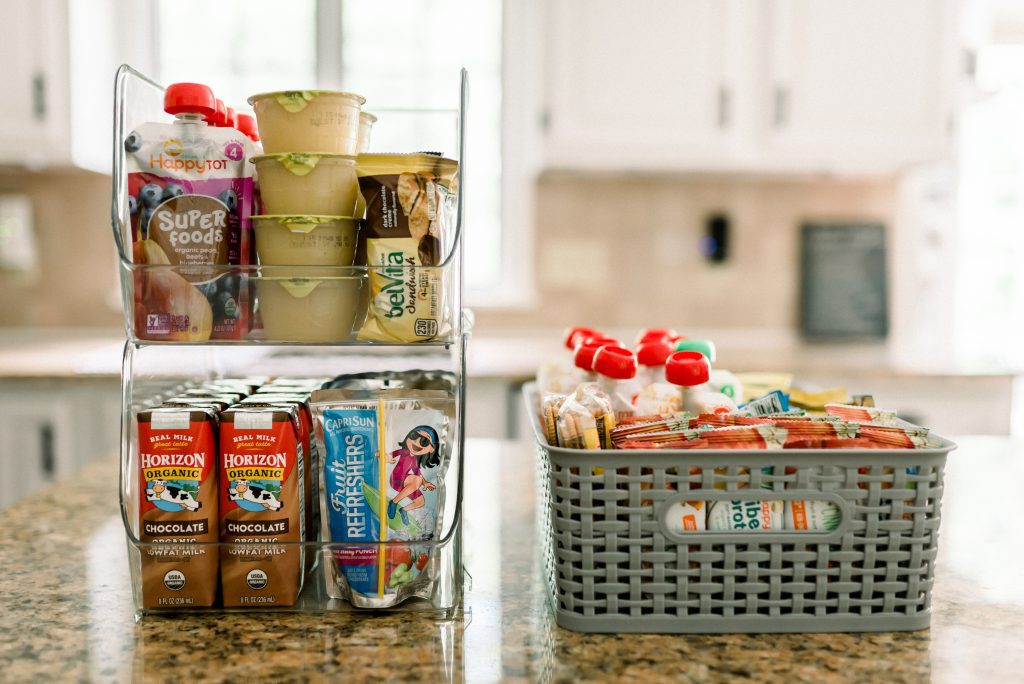
I’ll be the first to admit: my family’s eating habits are weird.
I like cold pizza for breakfast, and my son eats his yogurt with a side of asparagus. Still, we find ways to maintain a well-balanced diet.
Then quarantine hit. Overnight, our eating habits, and snacking in particular, went from quirky to savage. I’m talking bottomless pit, feed-me-seymour, welcome-to-the-thunderdome snacking. As my husband says, we “ate for sport” and our wallets and waistlines were screaming.
If this sounds like your family, here are a few ways to get back on track:
1. Get your snacks in one place
Choose one area in your pantry and fridge to store snacks.
You can monitor the single point of entry to control inventory and deter snack attacks. Plus, your kids get the illusion of choice when everything is in one spot.
We limit our snacks to one cabinet and a drawer in the fridge. For deep pantries, I recommend using shallow baskets that you can pull out like trays. I found the ones pictured below at the Homegoods in North Kingstown.
To make the most of your vertical space in the fridge, try stackable containers with wide openings in the front. I like the mDesign brand, because they have a few different sizes. You can find them on Amazon or shop their sister brand, InterDesign, in stores.
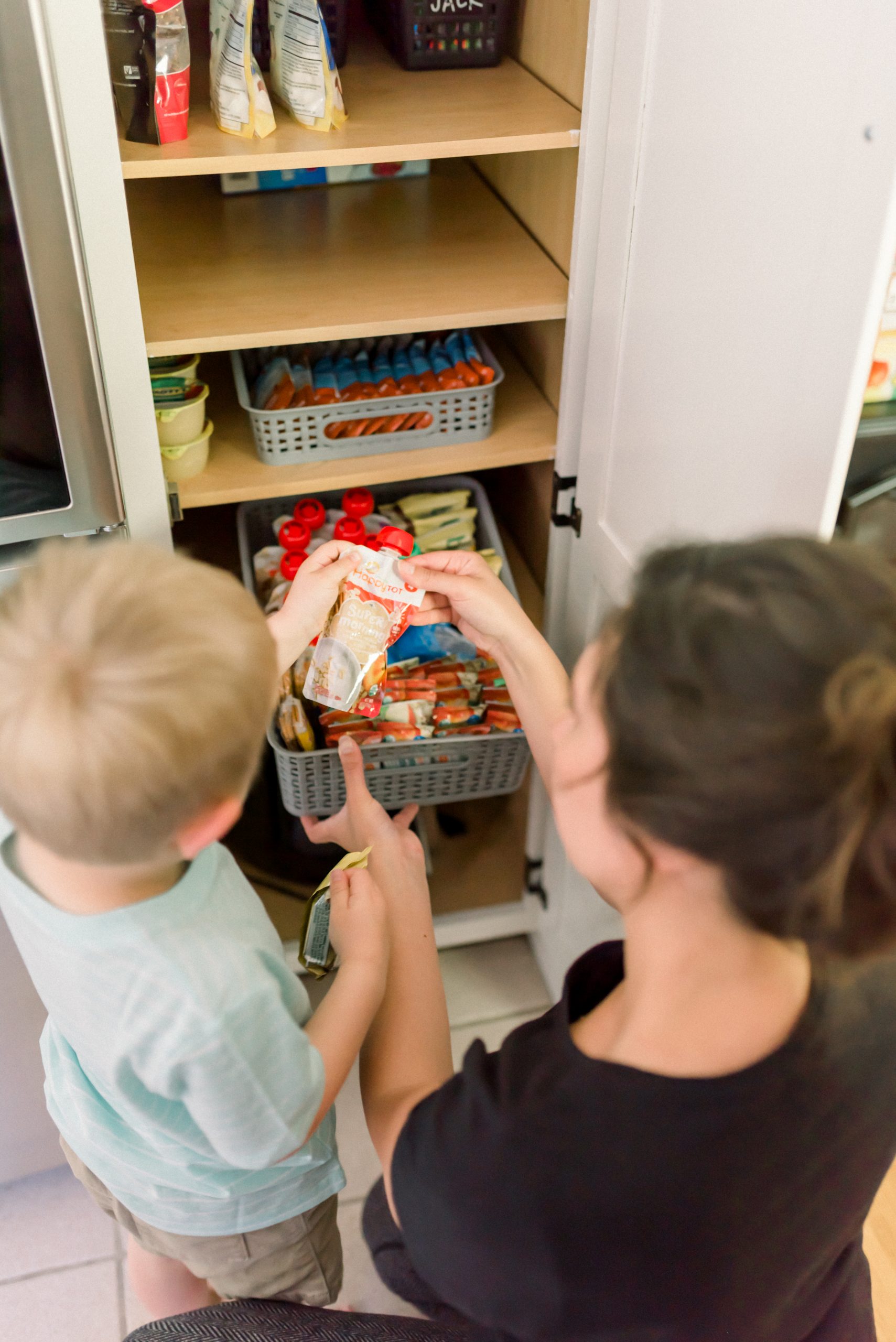
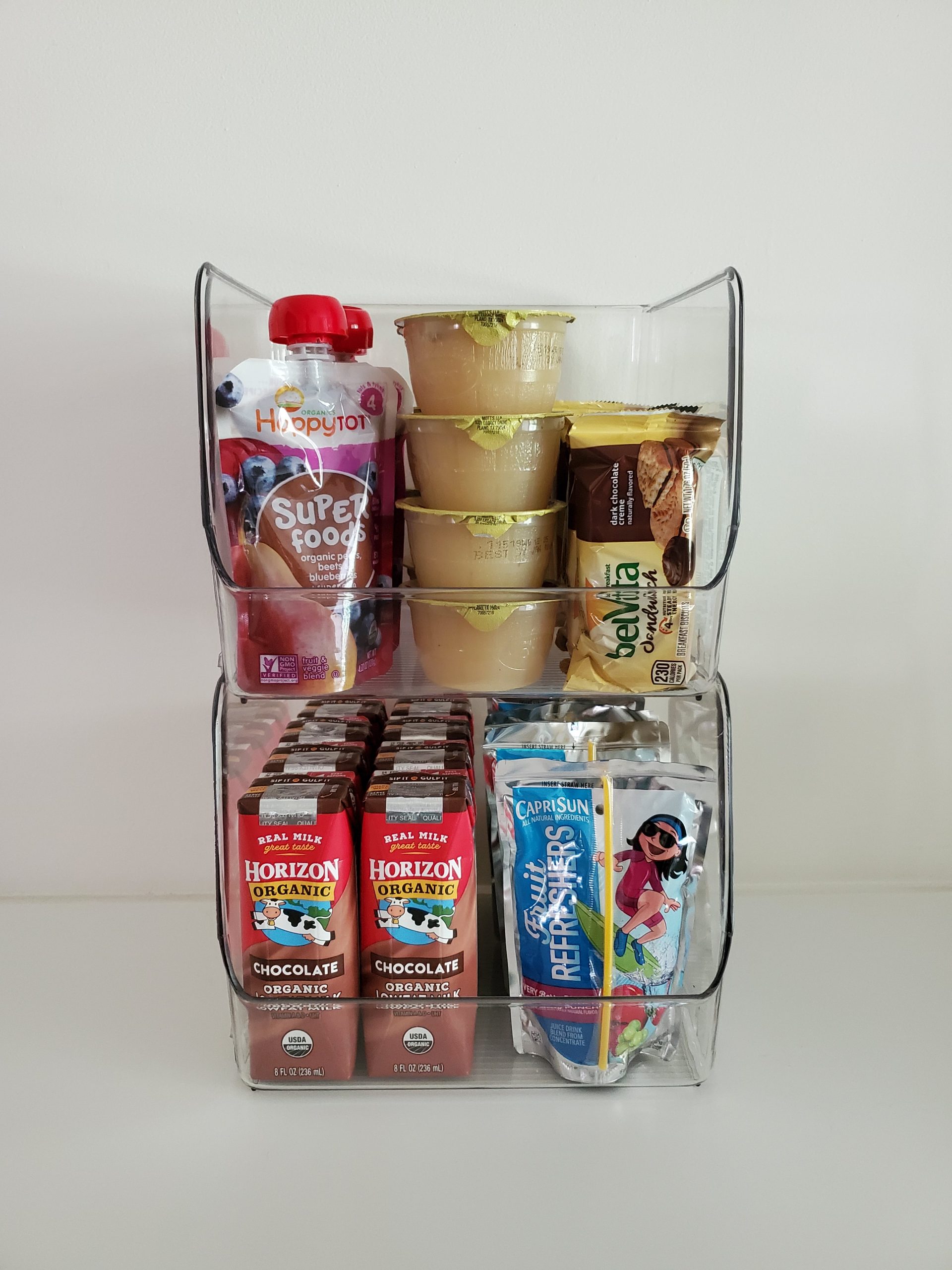
2. Ditch the packaging
Make your snacks self-service by removing annoying packaging.
When I get home from food shopping, I remove all wrappers and boxes, and then break down bulk food into single servings. For example, I take granola bars out of the box or make mixed goodie bags of raisins, crackers, and pretzels.
At snack time, my son feels empowered to grab what he needs. (See also: less whining).
I get more space in my cabinets, packing lunch is a breeze, and there’s zero chance of anyone, myself included, housing a box of Cheez-Its in one sitting.
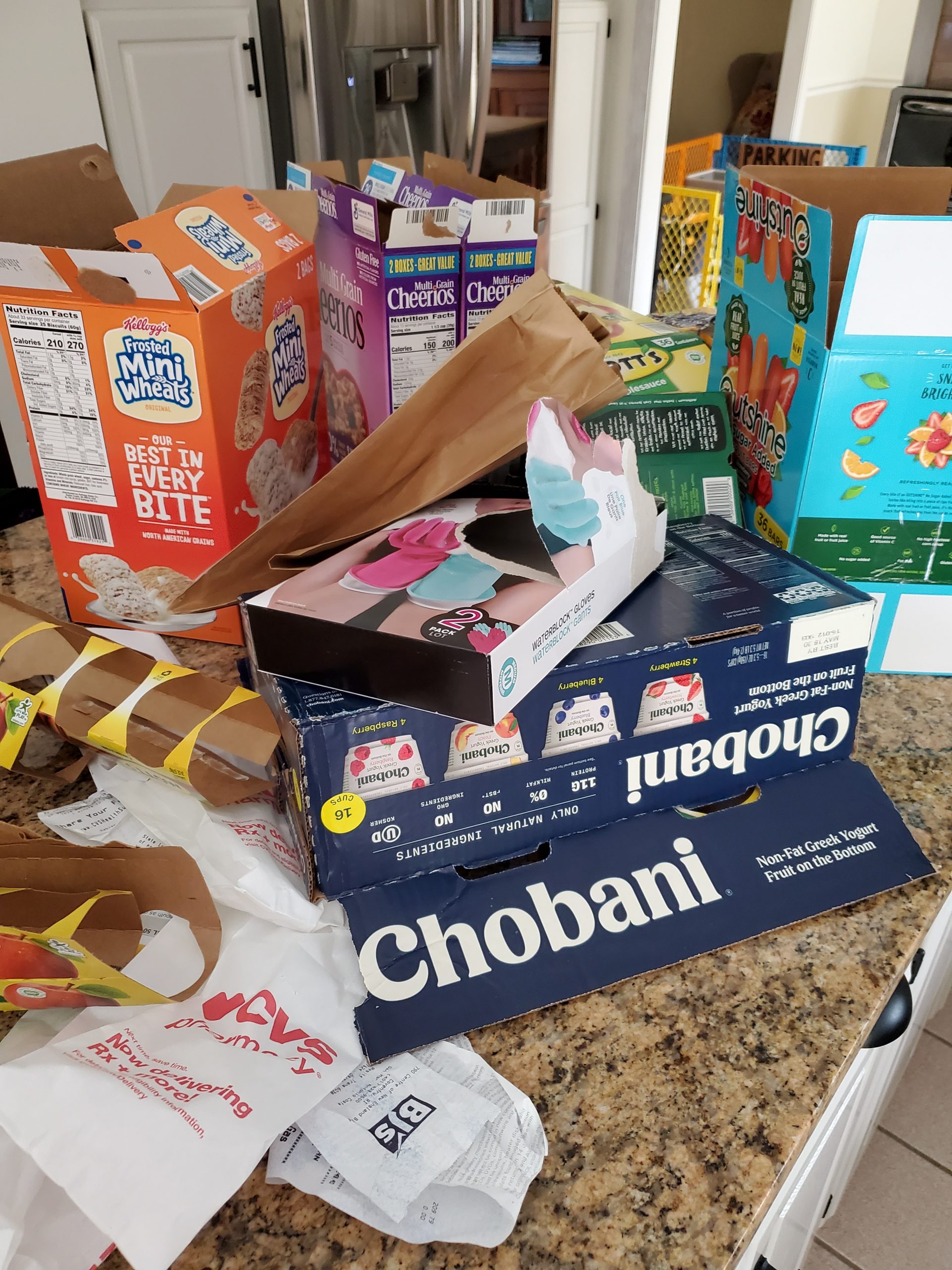
If you want to take this approach to the next level, try decanting your snacks in clear canisters or jars. High-traffic items like cereal or oatmeal are a good place to start. I recommend containers with a rubber gasket in the lid to keep food fresh.
3. Set boundaries for Snacking
Decide as a family how many snacks are allowed each day and, optionally, how often.
A little structure goes a long way! Following a snack schedule, such as one snack between meals, works for this stage of our lives.
As my son gets older, I’ll probably put a bin of snacks in the fridge each day. He can graze at his leisure and hopefully learn some self-control along the way. If I had more kids, I’d opt for a separate bin per child. I’m still working out trauma from my own brother eating the last [insert your favorite snack here] when we were growing up.
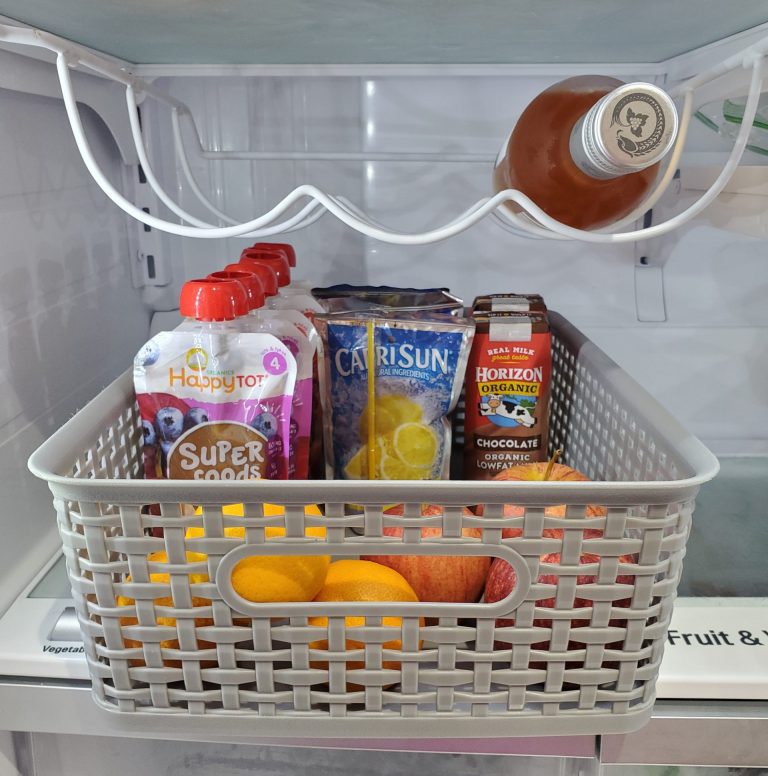
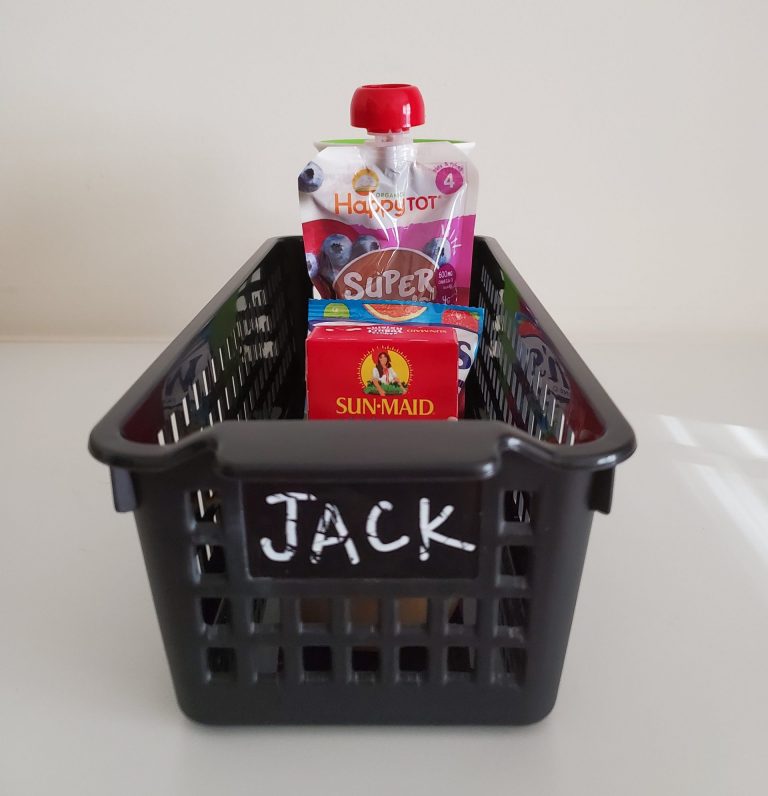
No matter how you choose to divvy up your snacks, I highly recommend the one-cup rule. Every kid gets one water cup for the day that they can refill and rinse out as needed. I don’t know about you but my tolerance for disassembling, washing, and reassembling sippy cups is pretty darn low.
Conclusion
For many of us, the pandemic has turned our homes upside down.
Following these tips, however, has at least restored a sense of normalcy in our kitchen, and to our snacking. I feel more organized, and there definitely has been a decline in the number of “Mom, what can I eat?” questions. In these times of uncertainty, having even one less question to answer is a win I’ll take any day.









